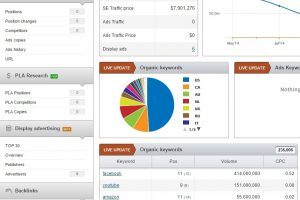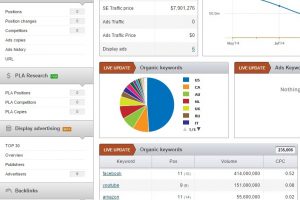Adjusted Bounce Rate – A Behavior KPI
Use Adjusted Bounce Rate To Monitor User Behavior
Ever wondered how many visitors really pay attention to your site before departing the page? Many of these visits are completely useless, but how many aren’t? When using adjusted bounce rate there’s finally a way to monitor this! Bounce rate in Google Analytics is one of the major key performance indicators that can help to assess the quality of your traffic. A bounce happens when the visitor left the site from the site landing web page, without going to any other page. That is a superb indication on how applicable the content was for the user and how engaged they had been with your site. Bounce rate does not always account for user behavior though, some may use the web page for and address or phone number or simply read the content and leave.
 While working ideal for web sites, there are groups of websites where this metric isn’t enough. For stated by Google, they apparently doesn’t use pure bounce rate as a rank signal, but that does not mean it isn’t an essential metric to monitor as a relevance signal. Nevertheless, as Google notes, it is more useful for some forms of sites compared to others. As an example, imagine you are promoting a post that explains all the advantages of your company; the visitor may read the entire post and remember your business and really good products – and they may immediately go to hunt for your product or service on one of the search engines straight away.
While working ideal for web sites, there are groups of websites where this metric isn’t enough. For stated by Google, they apparently doesn’t use pure bounce rate as a rank signal, but that does not mean it isn’t an essential metric to monitor as a relevance signal. Nevertheless, as Google notes, it is more useful for some forms of sites compared to others. As an example, imagine you are promoting a post that explains all the advantages of your company; the visitor may read the entire post and remember your business and really good products – and they may immediately go to hunt for your product or service on one of the search engines straight away.
Since that visitor just looked at the one page they’ll be recorded as bounced visitor. Another example when you have a service description value proposition on the web page, along with your telephone number on the exact same page, the visitor could study the description and then call you for more information and again, that visitor will be registered as a bounced visitor, as only a single page was seen. There are a lot examples, and even traditional web sites can benefit from the adjusted bounce rate KPI described below as compared to the standard unadjusted bounce rate.
Adjusted Bounce Rate Is The Answer
The solution to this issue is something referred to as adjusted bounce rate. You implement a small tweak to your Google Analytics code, which executes an event when a user has spent over a certain amount of time on the webpage. Depending on the website, the time can range from 10 seconds to few minutes – you should decide for yourself the amount of time you consider the user to be sufficiently engaged with your website or product or service.
Once the event is executed (past the time frame) the visitor is no longer counted as bounce even though no additional page view is recorded. This will mean your bounce rate will show users who have not spent a required minimal time on your website compared to the ones who have truly bounced.
Here is the adjusted bounce rate modification to the Google Analytics code that you need to make (on the example of the latest, asynchronous code):
<script type=”text/javascript”>
var _gaq = _gaq || [];
_gaq.push([‘_setAccount’, ‘UA-XXXXXXX-1’]);
_gaq.push([‘_trackPageview’]);
setTimeout(“_gaq.push([‘_trackEvent’, ’20_seconds’, ‘read’])”,20000);
(function() {
var ga = document.createElement(‘script’); ga.type = ‘text/javascript’; ga.async = true;
ga.src = (‘https:’ == document.location.protocol ? ‘https://ssl’ : ‘http://www’) + ‘.google-analytics.com/ga.js’;
var s = document.getElementsByTagName(‘script’)[0]; s.parentNode.insertBefore(ga, s);
})();
</script>
The setTimeout function is the one that requires the adjustment, and you can set it up to whatever delay you wish (in this example, it is 20 seconds).
Now that an event is created after the time expiration (the 20 second lapse), you can create a goal, here defining this event as a goal in Google Analytics, and even import this goal as a conversion to AdWords, provided all of the parameters are met.
Adopting adjusted bounce rate allows you to better understand how people engage with your website. This small code tweak will allow you to track and understand the users’ behavior and quality of the traffic coming to your website more accurately, and help you make more informed business decisions.

A seasoned digital marketing professional with over 20 years of expertise in digital marketing, search engine optimization, search engine marketing, brand development, conversion optimization, lead generation, web development and data analytics. He is a strategic digital marketing thought leader in a multitude of business verticals including automotive, education, financial services, legal marketing and professional services.



 How To Craft A Unique Value Proposition
How To Craft A Unique Value Proposition

 Silo sites are sites that are organized structurally to boost the main landing page in the search result pages by proper information on the website that links back to the landing page which is optimized for the primary keywords. The content of your site should be valuable to the end user however quantity is not as important as one might think. Constant updates of content are not necessary since the engines do not factor in the updates in the algorithm behind the intricate workings of search engines.
Silo sites are sites that are organized structurally to boost the main landing page in the search result pages by proper information on the website that links back to the landing page which is optimized for the primary keywords. The content of your site should be valuable to the end user however quantity is not as important as one might think. Constant updates of content are not necessary since the engines do not factor in the updates in the algorithm behind the intricate workings of search engines.

 1. Clearly state the value of your offer
1. Clearly state the value of your offer